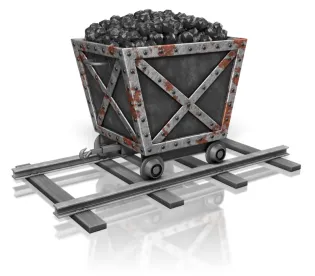A congressional mine safety hearing in October featured a dispute between regulators and the coal sector over dust sampling and disparate views among witnesses over how the federal government should oversee safety and health in the nation’s mines.
February 2016 is the deadline for coal operators to begin using the Continuous Personal Dust Monitor (CPDM), a device that measures respirable coal dust levels and provides readings instantaneously. However, the data may be affected by particles of harmless rock dust, thus potentially providing false positive readings.
“We need to make sure that the results from the CPDM are accurate, and that’s what’s lacking today,” Bruce Watzman of the National Mining Association (NMA) told members of the House Subcommittee on Workforce Protections on October 21.
During questioning from Chairman Tim Walberg (R-Mich.), Watzman said coal operators have asked the Mine Safety and Health Administration to assist with a study to sort out the rock dust/coal dust problem before the February CPDM implementation date, but contended the agency has not been willing to participate in a robust study. Another witness, Penn State University professor Dr. Jeff Kohler, called rock dust a confounder when measuring coal dust and stated further research is needed.
Ranking Member Representative Frederica Wilson (D-Fla.) challenged Watzman’s characterization of the research issue by reading excerpts from a letter from MSHA stating the agency was collaborating with the coal sector on evaluations to identify and apply best practices for managing rock dusting and respirable dust sampling. The correspondence was written by Assistant Secretary Joe Main.
Watzman responded, “It [the collaboration] may be taking place episodically at individual mines, but I can tell you this is not taking place with the industry as a whole.” He added that operators had done their own study and presented those results to MSHA, but the agency has yet to respond.
Ed Elliott, another industry presenter, described many MSHA regulations as “overly burdensome without requisite benefits to health and safety.” He criticized MSHA’s proposed amendments to its civil penalty rule, predicting they would not meet their stated goals and likely would bring about a dramatic increase in penalty assessments. Referencing a plan by MSHA to issue a proposal rule on crystalline silica next spring, he asserted that MSHA’s existing exposure limit was sufficiently protective “if fully complied with and enforced.” Elliott testified on behalf of the National Stone, Sand & Gravel Association.
In other remarks, Watzman objected to MSHA enforcement, which he called “a model with diminishing returns.” In contrast, he described CORESafety, a safety and health management system NMA launched in 2011 after concluding a new approach to mine safety was needed. The intent of the system is to identify at-risk behaviors, conditions, and practices that lead to accidents and then correct them. Safe behavior is shaped by leadership and culture, neither of which can be “legislated or regulated,” he said. Penn State University professor Kohler called approaches like CORESafety “game changers” for improving mine safety.
Watzman also advocated for a Voluntary Protection Program (VPP) in mining, akin to that administered by the Occupational Safety and Health Administration. Elliott supported a similar approach, which he called a pattern of compliance program. However, a fourth witness, Mike Wright of the Steelworkers union, expressed opposition. Not only should there be no enforcement exemption for “safe mines,” he said, there should also be no waiver of citations for first offenses. He said MSHA should issue a safety and health program standard, make improvements in miner training, and collaborate more closely with OSHA. He called on lawmakers to give MSHA subpoena authority, devise a better way for MSHA to collected uncollected fines, such as through withdrawal orders, and increase criminal penalties.
Steve Sanders, an attorney with the Appalachian Citizens’ Law Center, spoke in support of the Black Lung Benefits Improvement Act, which includes a number of provisions designed to improve the process of filing and adjudicating claims for benefits. Kohler, who formerly headed the government’s mining research program, said that miners and mine rescue personnel lack confidence in the protective capacity of mobile rescue chambers in underground coal mines, and pointed to in-place shelters as “a known and workable alternative.”




 />i
/>i
